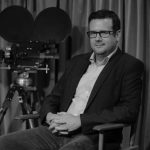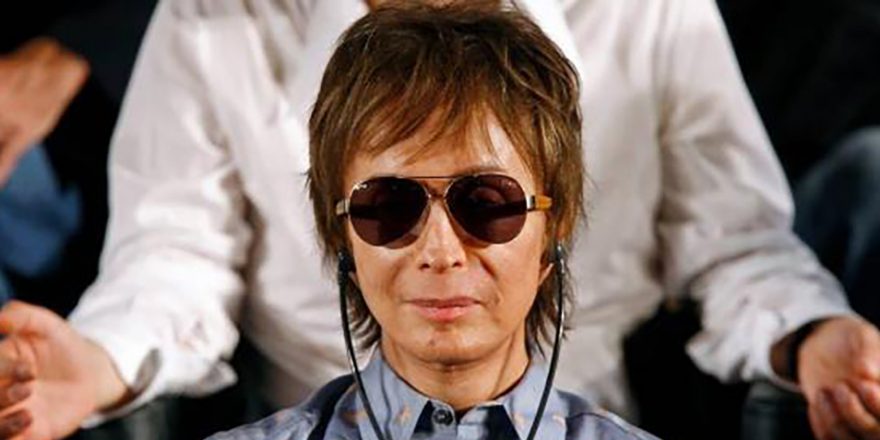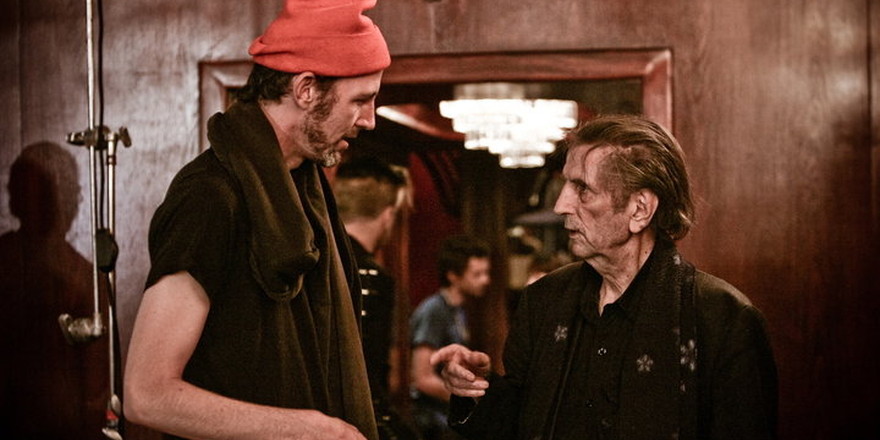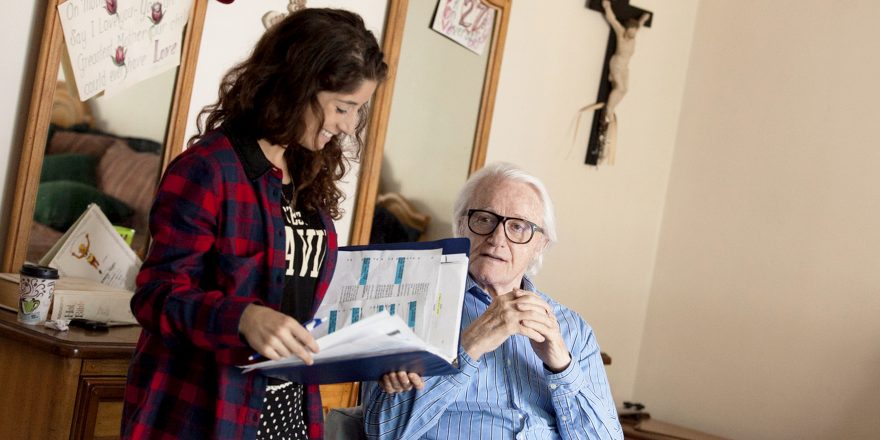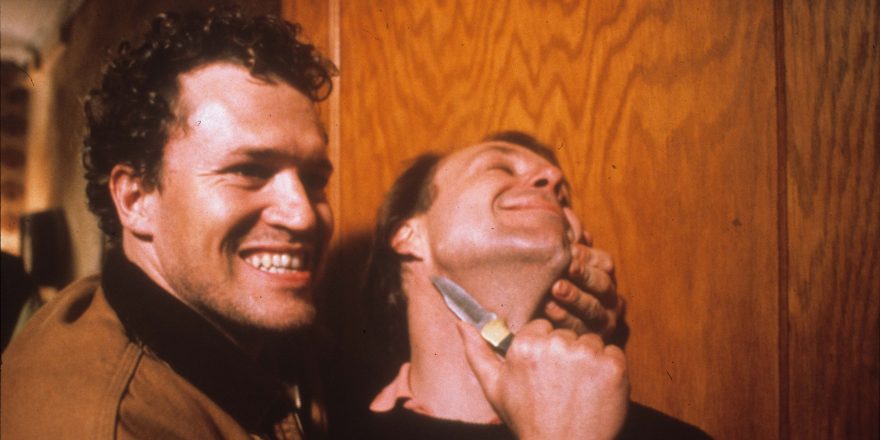Luke Perry’s death on Monday at the age of 52 prompted his fellow actor Jon Cryer to write, “Luke Perry was a character actor in the body of a heartthrob,” a statement that was picked up in numerous eulogies and tributes, no doubt because of its undeniable ring of truth. Luke Perry was one of those guys who was so good looking – and whose rise to fame was so stratospheric in the era when Beverly Hills 90210 became a pop culture phenomenon – that it took a lot longer than it should have for people to take him seriously. Yet he made bold, interesting choices right out of the gate, starring in idiosyncratic films like Buffy the Vampire Slayer and John Avildsen’s lovely 8 Seconds while still a TV teen idol. The riskiest and most poignant of these early roles resulted in not only his best work but also one of the most moving and original performances of the 1990s by any actor; the role was aspiring suburban family man turned bank robber Chris Anderson, and the movie was director John McNaughton’s 1996 masterpiece Normal Life.
Loosely based on a real case, Normal Life tells the story of Chris, an idealistic young cop who falls hard for Pamela (Ashley Judd), a deeply troubled addict whose problems only worsen when she and Chris are married and attempt to live the normal life of the title. Pamela’s emotional and chemical issues are exacerbated by economic instability that ratchets up throughout the first half of the movie, culminating in Chris’s firing after he refuses to go along with the civil rights abuses in which his colleagues engage on a regular basis. Perry is as subtle as he is clear and forceful in his depiction of Chris’s anxieties, creating a flawless portrait of a guy in way over his head, trying to keep his life and his marriage together. When he turns to bank robbery it doesn’t feel like a plot device or cliché – it feels like the most logical, natural step in the world, because to Chris it is, and Perry invites the audience to share his character’s recklessness so intimately that the movie is genuinely difficult to watch at times.
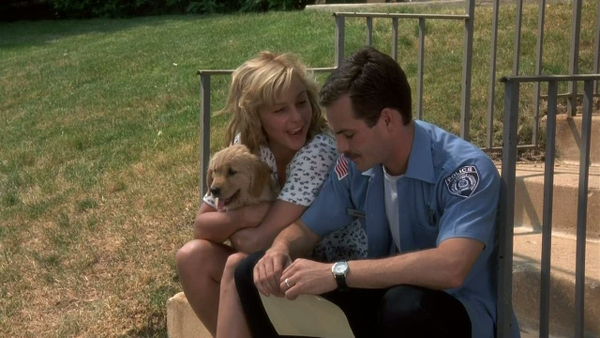
Normal Life opens with a flash-forward showing the couple’s arrest and then jumps back in time to start their story at the beginning. As a result, the entire movie feels soaked in despair; even the moments of tenderness and triumph reek of hopelessness because we know the lovers are doomed. (And it’s not a sexy doom like Bonnie and Clyde – in McNaughton’s unflinching vision, the fate Chris and Pam are headed for is stark and without glamor.) The genius of Perry’s performance lies in how he communicates that sense of fatalism to the audience while playing the desperate optimism of a guy who thinks there’s a chance, however slight, that he can change his financial situation and make his wife happy – both impossible pursuits, as it turns out. Normal Life is one of the greatest movies ever made about how much work it is to fool ourselves, and how willing many of us are to do that work rather than face reality. In scene after scene, Perry conveys a kind of frantic denial that I’ve never seen on film before, but that I’ve seen plenty in life – not so much a belief that things will get better but an inability to consider the alternative until it’s too late.
When Normal Life came out in 1996, it was the latest in a series of crime movies revolving around a romantic couple; aside from the Quentin Tarantino-penned True Romance and Natural Born Killers, the early to mid-90s saw the releases of Love and a .45, Kalifornia, The Chase, and the Alec Baldwin-Kim Basinger remake of The Getaway, among others. Normal Life cuts deeper and hits harder than any of these films, because there’s no buffer of genre or ironic humor between the action and the audience. Like McNaughton’s 1986 horror film Henry: Portrait of a Serial Killer, the movie connects the viewer to the characters’ nervous systems with no dilution and no distance – as a result, McNaughton is able to make the most mundane domestic arguments unbearably uncomfortable and nerve-shredding, and when the characters’ implicit tensions are made explicit and turned into action Normal Life turns into the cinematic equivalent of a slow-motion car crash that you can’t look away from. McNaughton revels in specific, realistic details; there’s no such thing as a conventional action scene in Normal Life, because even in the chases and shoot-outs the director is so focused on how the drama would actually unfold in the real world that he makes it look like something you’ve never seen before. This is a director who wants to know what it really feels like to steal a car, or listen to the authorities closing in on your fugitive wife over a police radio, or aim a gun at someone or have it aimed at you – and he wants you to know what it feels like, and he knows how to make you feel it through his unobtrusive but flawless sense of camera placement, editing and sound design.
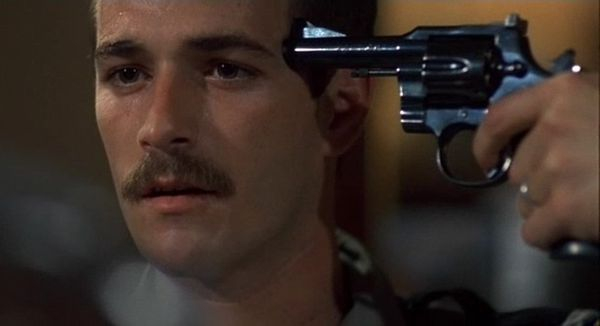
Perry was the perfect partner for McNaughton in this regard. I don’t know that he ever truly got credit for how genuine his characters always felt; there’s a reason why he ruled the world during the time he played Dylan McKay on Beverly Hills 90210, and it’s that kids knew he was the real deal. I watched every episode of 90210 multiple times when it first aired, and have spent dozens of hours watching Perry since in movies like 8 Seconds and TV series like Riverdale, and I’ve never once caught him “acting.” I think this caused him to be somewhat underrated, because people mistakenly assumed he was always playing himself; the only way to recognize the absurdity of this assumption was to watch several of his performances back to back and see how wildly different many of them were.
Normal Life should have catapulted Perry into the ranks of the top actors of his generation, and it should have started an ongoing partnership between him and McNaughton along the lines of what Scorsese and De Niro (or later Scorsese and DiCaprio) had. Unfortunately, it was barely seen in 1996 thanks to New Line’s loss of faith after a bad test screening in a mall, where the Dylan McKay fans were understandably mortified by images of self-mutilation and scenes of marital discord so searing they made Bergman’s Scenes From a Marriage look like an episode of Newhart. The studio dumped the film with no fanfare and it never really found the audience it deserved in spite of great reviews from the handful of critics who bothered to write about it.
So Perry largely returned to where he came from, episodic television, and continued to do fine work in everything from procedurals to sitcoms to prestige HBO shows, with the occasional detour into films like The Fifth Element and Tarantino’s upcoming Once Upon a Time in Hollywood. It was both a solid career and one that was cut far too short by Perry’s untimely death. Yet rather than mourn the films and TV shows he’ll never get to, I recommend another course of action: discover or revisit Normal Life and celebrate the fact that once, for 102 minutes, Luke Perry was as great an actor as ever lived.




